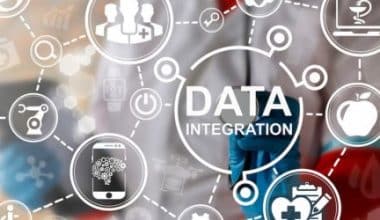In this age of technological advancement, data is becoming the latest form of currency. Following this, customer data platforms have become more prevalent as sales and marketing teams use high volumes of data from various sources. While a company needs digital transformation, creating a customer data platform (CDP) is crucial, especially with top platforms like Salesforce, vs CRM. With the help of this platform, businesses can gather, store, combine, and analyze client data from many sources in a simple-to-use system. However, keep reading to learn more!
What Is A Customer Data Platform?
A customer data platform (CDP) is a marketer-managed system that creates a persistent, unified customer database accessible to other systems. It is different from a customer relationship management (CRM) system or a data warehouse in that it supports marketing decisions, not just sales or IT processes.
A CDP typically ingests data from multiple sources, including first-party data from website interactions, CRMs, and loyalty programs, as well as second and third-party data from data providers. The CDP unifies this data into a single view of the customer, which can then go into other systems, such as marketing automation or personalization platforms.
CDPs often support marketing initiatives such as omnichannel marketing, real-time personalization, and cross-channel campaign management. They can also be used to inform website design, product development, and other customer-facing decisions.
What Does A Customer Data Platform Do?
A customer data platform (CDP) is software that helps businesses collect, unify, and manage customer data. While there are differences between a customer data platform vs CRM, you can use top platforms like Salesforce in your company.
- First, a customer data platform can help businesses keep track of customer information from different sources, including online and offline interactions. This data can be used to create a single customer profile that aids customer service, targeting marketing campaigns, and personalizing the customer experience.
- Second, a customer data platform helps track customer behavior, such as what products they have purchased, what pages they have visited on a website, and whether they have responded to a marketing campaign. You can use the data to segment customers into groups, such as those likely to purchase a product or at risk of churning. By understanding customer behavior, businesses can make better decisions on how to allocate their resources.
- And finally, a customer data platform can also be used to create a 360-degree view of the customer, which improves customer service. This view can include the customer’s contact information, purchase history, and support tickets. By having all this information in one place, businesses can provide their customer service team with the information they need to resolve issues quickly.
What Are The 4 Types Of Customer Data?
The four types of customer data are basic data, interaction data, behavioral data, and attitudinal data.
#1. Basic Data
Basic data is one of the most important types of customer data. This data can include items like the customer’s name, address, phone number, and email address. This information is essential because you can use them to contact the customer and generate leads.
In addition, basic data can also include demographic information. This can be useful for segmenting customers and targeting them with specific marketing messages. Demographic information includes the customer’s age, gender, income, and location.
However, Basic data is the foundation for all other types of customer data and is essential for companies to create a complete picture of their customer. It is also vital for any customer database because it can provide valuable information to improve customer service and generate new leads.
#2. Interaction Data
Interaction data is another important type of customer data. This data includes information about how customers interact with a company, its products, and its services. It enhances customer service, evaluates customer satisfaction, and identifies areas where a company can improve its products and services.
In addition, you can collect interaction data in many ways, including surveys, customer feedback forms, and customer service logs. This data identifies patterns and trends in customer behavior, and help assess the effectiveness of customer service interactions.
#3. Behavioral Data
Behavioral customer data is much like customer interaction data, but behavioral customer data is quite deeper. It examines the direct interactions a customer has with your company.
In other words, behavioral data capture how customers interact with a company’s products or services. The data is to understand customer behavior and preferences and to improve the customer experience. You can collect behavioral data through website analytics, customer surveys, and customer feedback.
Behavioral data is a valuable tool for businesses to understand customers and improve their products and services. By understanding how customers interact with their products or services, businesses can make changes to improve the customer experience. Additionally, behavioral data can help organizations identify customer needs and preferences.
#4. Attitudinal Data
Attitudinal data is information that customers provide about their thoughts, feelings, and perceptions. This type of customer data passes through surveys, interviews, focus groups, and other research methods.
Hence, attitudinal data can be very useful for businesses, as it can provide insight into how customers feel about a product, service, or brand. The data can help businesses to understand what customers like and don’t like, and can also help to identify any potential problems.
Top 5 Customer Data Platforms
There are many customer data platforms, each with its unique benefits. Here are the top 5 customer data platforms:
#1. Salesforce
Salesforce Customer Data Platform (CDP) is a powerful tool that helps companies unify their customer data, automate engagement across channels, and deliver personalized experiences at scale. CDPs are growing in popularity as companies realize the benefits they can offer.
Salesforce is one of the top customer data platforms on the market. It offers numerous features and integrations that make it easy to use and highly effective.
The platform or company, Salesforce provides its users with a complete view of their customer data. You can use the data to create targeted marketing campaigns, improve customer service, and increase sales.
Additionally, Salesforce provides a CRM system that helps businesses track and manage customer relationships.
#2. BlueConic
BlueConic is another powerful customer data platform that enables companies to collect, unify, and activate customer data across all channels and devices. With BlueConic, companies can create a single view of the customer, allowing them to deliver more personalized and relevant experiences.
Additionally, the customer data platform or company, BlueConic provides the ability to segment and target customers based on their interactions and behaviors. As a result, companies using BlueConic can boost customer engagement, loyalty, and conversions.
#3. Oracle
Oracle customer data platform enables organizations to connect all their data, easily discover new insights, and take immediate action to drive better business outcomes. Oracle’s CDP is the only platform that enables firms to connect their data in real-time, across all their channels and systems. It also takes immediate action to drive better customer experiences and business outcomes. This customer data platform company is built on an open, standards-based architecture.
As one of the top customer data platforms, companies like McDonald’s, Coca-Cola, and AT&T trust Oracle to help them make the most of their customer data. Meanwhile, Oracle’s customer data platform helps them improve customer loyalty, increase customer retention, and drive more sales.
#4. Segment
Segment is one of the top customer data platforms and offers powerful tools for data-driven marketing. With the company Segment, people can use the platform to collect customer data from any source and then send it to any destination for analysis and action.
This makes it possible to unify customer data across all channels and touchpoints, allowing businesses to get a complete view of their customers and create more personalized, data-driven marketing campaigns.
#5. Tealium
Tealium is a top customer data platform for many reasons. It offers unified data collection and management, robust integrations with leading marketing and advertising tools, and a team of experts to help organizations get the most out of their customer data.
So, if you’re looking for a customer data platform that can help you unlock the full potential of your customer data, Tealium is a great option to consider.
How To Choose The Right Customer Data Platform For Your Business
Below are some factors to consider when choosing a CDP for your business:
- First, the type of data you need to collect and consolidate.
- Secondly, the scale of your data collection and consolidation requirements.
- Thirdly, the level of integration with other systems and platforms.
- And lastly, the level of support and maintenance required.
The right CDP for your business depends on your specific needs and requirements. However, these factors can help you narrow your options and choose the best CDP for your business.
Customer Data Platform vs CRM
A customer data platform (CDP) is a system for compiling data from multiple sources into a single, 360-degree view of the customer. Marketers typically use it to understand customer behavior and preferences better.
A CRM, or customer relationship management system, is a software tool sales and marketing teams use to manage customer data, track customer interactions, and automate sales and marketing processes. CRM systems typically include features like contact and lead management, opportunity tracking, and activity management.
So, what’s the difference between a CDP and a CRM? CDPs focus on compiling customer data into a single view, while CRMs focus on managing customer relationships. While a CDP can be used to feed data into a CRM, a CRM cannot be used as a CDP.
Is Microsoft Dynamics A CRM Or CDP?
Microsoft Dynamics is both a CRM and CDP. Microsoft Dynamics is a CRM software that helps businesses manage their customer data. It provides users with tools to track customer interactions, create customer profiles, and manage customer relationships. Also, Microsoft Dynamics can serve as a CDP, but it is not limited to this function. It is a versatile software used to manage customer data in various ways.
What Is A CDP vs CRM?
A CDP, or customer data platform, is a system that helps businesses collect and manage customer data. On the other hand, CRM, or customer relationship management, is a system designed to help businesses manage their customer interactions. Meanwhile, both systems have strengths and weaknesses, but you can use them together to create a more comprehensive customer management system.
Is Google Analytics A CDP?
No, Google Analytics is not a CDP. Google Analytics is a web analytics tool that helps businesses track website traffic and conversions. While Google Analytics can collect data from various sources, it is not a CDP because it does not provide a centralized platform for storing and accessing customer data.
Is Salesforce A Customer Data Platform?
Yes, Salesforce is a customer data platform. With Data Cloud, real-time CDP capabilities are accessible in the whole Salesforce business suite.
Is CDP A SaaS?
Yes, CDP is a SaaS. It is a software-as-a-service platform that enables organizations to collect and manage customer data.
Why Is CDP Popular?
CDP is popular because it allows organizations to track and manage customer data in a centralized repository. This repository can give a 360-degree view of the customer, improve customer service, target marketing efforts, and track customer behavior. Additionally, CDP can help organizations understand their customer base, as well as identify opportunities for customer growth.
Conclusion
A customer data platform (CDP) is a powerful tool for managing customer data. The ability to collect, process, and store customer data in a centralized platform provides businesses with valuable insights into customer behavior.
Due to the numerous advantages a customer data platform provides, it is no wonder this technology is becoming increasingly popular. As there are many top customer data platforms, when choosing a CDP company or provider, consider the specific needs of your business. Each CDP platform has its strengths and weaknesses, and it is important to select one that will best meet the needs of your business.






